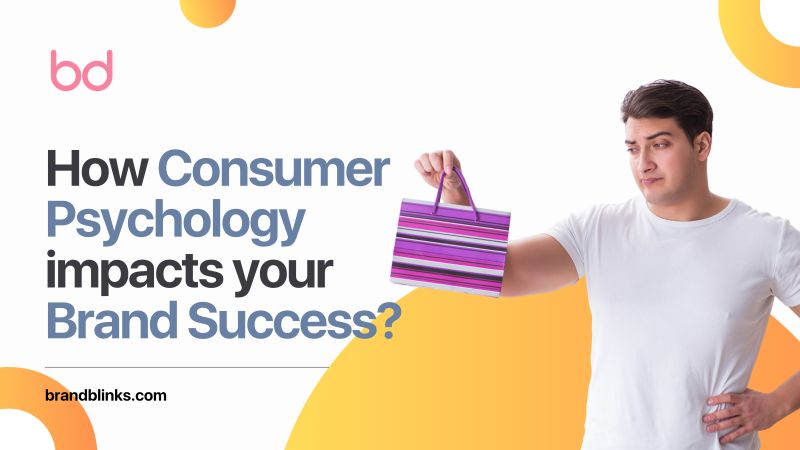How Consumer Psychology Impacts Your Brand Success
Have you ever wondered why you suddenly crave that irresistible burger after seeing a mouthwatering ad on TV? Or why do you feel the urge to buy that fancy gadget just because it's on sale? Well, my friend, it's all about consumer psychology – the sneaky science behind marketing and advertising that influences our buying decisions without us even realizing it.
Brand Blinks
3/11/20242 min read


Have you ever wondered why you suddenly crave that irresistible burger after seeing a mouthwatering ad on TV? Or why do you feel the urge to buy that fancy gadget just because it's on sale?
Well, my friend, it's all about consumer psychology – the sneaky science behind marketing and advertising that influences our buying decisions without us even realizing it.
So, what exactly is consumer psychology, you ask? Let's break it down.
Consumer psychology is all about understanding how our brains work when it comes to making purchasing decisions. It delves into our thoughts, emotions, and behaviors to figure out what makes us tick as consumers.
Now, you might be thinking, "But how does this relate to marketing and advertising?" Ah, I'm glad you asked! You see, marketers and advertisers use the principles of consumer psychology to craft messages and campaigns that resonate with us on a deeper level, ultimately persuading us to buy their products or services.
But how do they do it?
Emotional Appeal
Have you ever seen an ad that tugs at your heartstrings and leaves you feeling all warm and fuzzy inside? That's no coincidence! Marketers know that appealing to our emotions – whether it's joy, nostalgia, or even fear – can create a strong connection with their brand and make us more likely to buy.
Social Proof
Ever noticed those customer reviews and testimonials plastered all over product websites? That's social proof in action! When we see others endorsing a product or service, we're more inclined to trust it and follow suit. After all, if everyone else loves it, it must be good, right?
Scarcity and FOMO
"Limited time offer!" "Only 3 left in stock!" Sound familiar? Marketers often use scarcity tactics to create a sense of urgency and fear of missing out (FOMO) among consumers. When we believe that a product is in high demand or available for a limited time only, we're more likely to snap it up before it's gone for good.
Visual and Verbal Cues
Ever noticed how certain colors, fonts, and words can evoke specific feelings and associations? That's no accident! Marketers carefully choose visual and verbal cues that align with their brand image and appeal to their target audience's preferences and aspirations.
Behavioral Economics
Ever fallen for a "buy one, get one free" deal even though you only needed one item? That's behavioral economics at play! Marketers leverage principles like loss aversion, anchoring, and the decoy effect to nudge us toward making certain purchasing decisions, even if they're not entirely rational.
So, the next time you find yourself reaching for that tempting treat or clicking "add to cart" on that irresistible deal, remember – it's not just your cravings at work. It's the clever tactics of consumer psychology, working behind the scenes to sway your decisions and win over your wallet.
© 2025 BRNDXMORPH Media Worldwide Private Limited. All rights reserved
Brand Blinks Global® | BBG is an independent global brand consulting and transformation company.
The trademarks, logos, and service marks displayed on this site are the property of their respective owners.
"Brand Blinks Global®," "Brand Blinks®," "Made for the Uncommon®," and the "bd®" logo are trademarks or registered trademarks of BRNDXMORPH Media Worldwide Private Limited.
RESOURCES
INTELLIGENCE
BUSINESS
PARTNER
COVERAGE
EXPLORE
Made for the Uncommon®


When your brand grows, others rise too. 2% of your project empowers a nonprofit we back together every year.


